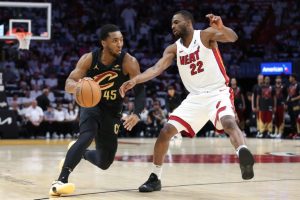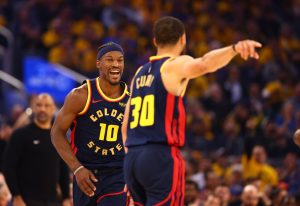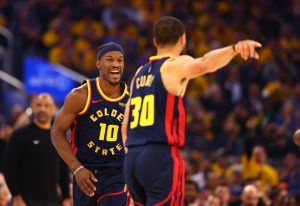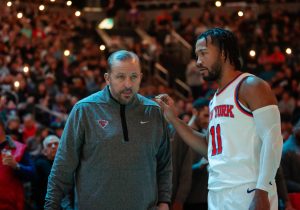The NCAA scored a significant legal victory on Monday when a federal judge dismissed a case brought by former college athletes argued they deserved damages for being unable to capitalize on their name, image, and likeness (NIL) rights during their playing careers in the 1990s and early 2000s.
While the NCAA agreed to a major $2.8 billion House settlement, which compensates Division I athletes who played between 2016 and 2021, athletes from earlier eras are left out. The exclusion prompted a wave of lawsuits from older former players, including notable names like Reggie Bush and Terrelle Pryor.
One of the first of these lawsuits to reach a ruling was led by former Kansas basketball star Mario Chalmers, along with 15 other former football and basketball players.
On Monday, U.S. District Judge Paul Engelmayer dismissed their class action lawsuit without allowing for an appeal. His decision is seen as a precedent-setting moment, with major implications for similar lawsuits still pending. By dismissing the Chalmers case, the NCAA potentially avoids millions of dollars in legal fees and billions more in possible damages.
The key factor behind Engelmayer’s ruling was the four-year statute of limitations that governs antitrust cases. The judge found that the players’ claims centered around the lost opportunity to earn NIL compensation fell well outside the allowable time frame.
Related: Kentucky turns heads with new NIL structure
Chalmers’ attorneys had argued that the NCAA’s continued use of players in materials like video games and promotional content and constituted an ongoing violation. Engelmayer firmly rejected that idea, stating that the use of NILs obtained decades ago did not restart the limitations clock. In his words, the continued use was not a “new overt act” that could refresh the timeline for filing a lawsuit.
Related: Quinn Ewers suffers major blow following the NFL Draft
The NCAA said in a statement that it was pleased with the court’s dismissal of the Chalmers case and emphasized that the judge “definitively examined and dismissed” the claims on both antitrust and unjust enrichment grounds, noting they were untimely and precluded by earlier case law. The collegiate oversight body also expressed hope that other similar lawsuits would be dismissed, further shielding the organization from massive financial liability.
Related: Livvy Dunne turns heads by crushing retirement life
For now, the decision marks a major legal win for the NCAA as it navigates the turbulent and still-developing landscape of NIL rights. It also delivers a strong message to other former athletes hoping for retroactive compensation. The courts may not be sympathetic to cases that fall outside the accepted legal timeframes.
The NCAA scored a significant legal victory on Monday when a federal judge dismissed a case brought by former college athletes argued they deserved damages for being unable to capitalize on their name, image, and likeness (NIL) rights during their playing careers in the 1990s and early 2000s.
While the NCAA agreed to a major $2.8 billion House settlement, which compensates Division I athletes who played between 2016 and 2021, athletes from earlier eras are left out. The exclusion prompted a wave of lawsuits from older former players, including notable names like Reggie Bush and Terrelle Pryor.
One of the first of these lawsuits to reach a ruling was led by former Kansas basketball star Mario Chalmers, along with 15 other former football and basketball players.
On Monday, U.S. District Judge Paul Engelmayer dismissed their class action lawsuit without allowing for an appeal. His decision is seen as a precedent-setting moment, with major implications for similar lawsuits still pending. By dismissing the Chalmers case, the NCAA potentially avoids millions of dollars in legal fees and billions more in possible damages.
The key factor behind Engelmayer’s ruling was the four-year statute of limitations that governs antitrust cases. The judge found that the players’ claims centered around the lost opportunity to earn NIL compensation fell well outside the allowable time frame.
Related: Kentucky turns heads with new NIL structure
Chalmers’ attorneys had argued that the NCAA’s continued use of players in materials like video games and promotional content and constituted an ongoing violation. Engelmayer firmly rejected that idea, stating that the use of NILs obtained decades ago did not restart the limitations clock. In his words, the continued use was not a “new overt act” that could refresh the timeline for filing a lawsuit.
Related: Quinn Ewers suffers major blow following the NFL Draft
The NCAA said in a statement that it was pleased with the court’s dismissal of the Chalmers case and emphasized that the judge “definitively examined and dismissed” the claims on both antitrust and unjust enrichment grounds, noting they were untimely and precluded by earlier case law. The collegiate oversight body also expressed hope that other similar lawsuits would be dismissed, further shielding the organization from massive financial liability.
Related: Livvy Dunne turns heads by crushing retirement life
For now, the decision marks a major legal win for the NCAA as it navigates the turbulent and still-developing landscape of NIL rights. It also delivers a strong message to other former athletes hoping for retroactive compensation. The courts may not be sympathetic to cases that fall outside the accepted legal timeframes.












